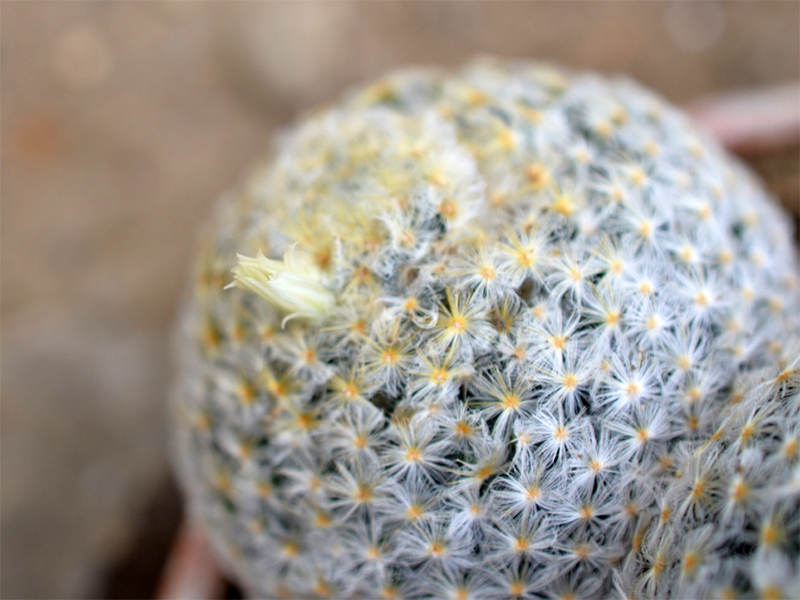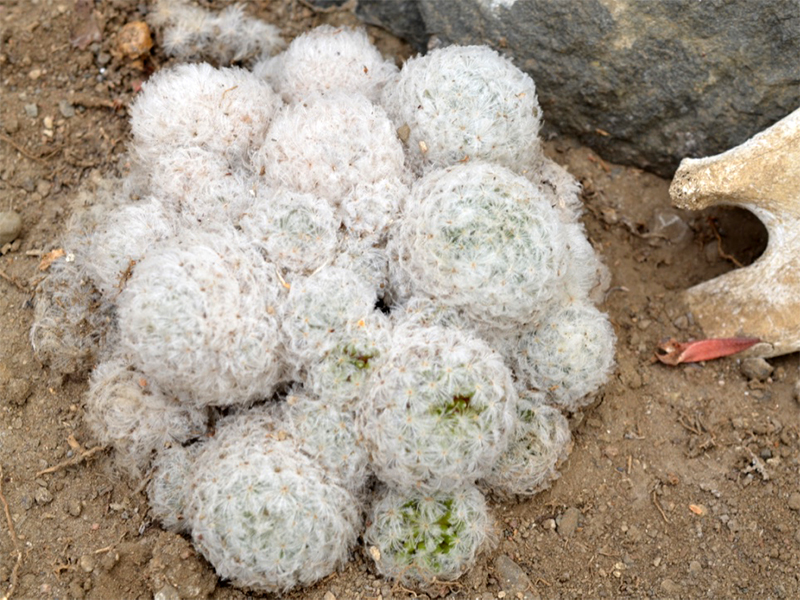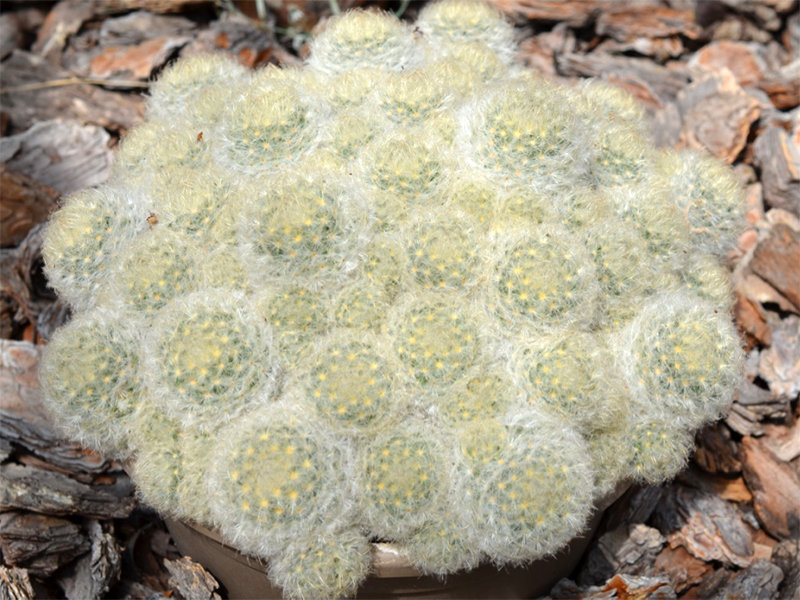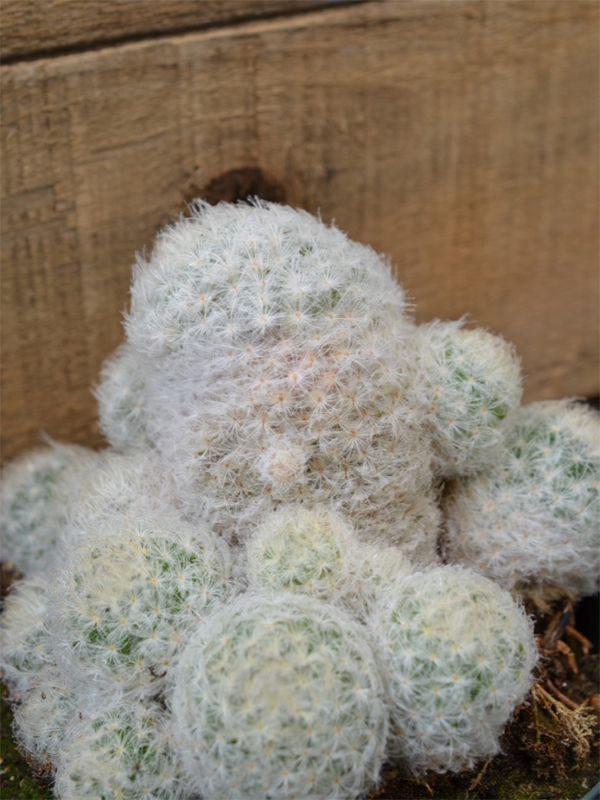| General Description | Mammillaria plumosa is a cactus with light green globose stems covered with hairy white spines, forming a low, dense, cushion-like mound. Often in clusters. |
| Landscape | Rock gardens, arid gardens, as a potted patio or indoor plant, in cactus collections or as a specimen. |
| Propagation | By seed sown in early spring at 19 - 24°C, however seed is seldom set. By offsets which do not root easily, using a coarse vermiculite and rooting hormone is recomended. |
| Cultivation | Grow in a sheltered location in full sun, moderately moist, well-draining loamy and sandy soil. Use a balanced liquid fertilizer every 2 - 3 weeks. |
| Pests | May be susceptible to mealybugs. |
| Notable Specimens | The Devonian Botanic Garden, Devon, Alberta, Canada.
Centennial Conservatory, Thunder Bay, Ontario, Canada. |
| Leaf Description | Up to 40 white feathery spines (modified leaves) 3 - 7 mm long are radially distributed on globose stems, woolly axils. |
| Flower Description | Bell-shaped, Solitary, 15 - 12 mm, cream to pale pink petals with a darker pink, central vein, curving outwards, bright yellow stamens. The inner petals are pale greenish-white with brownish mid-lines. |
| Fruit Description | Pale pink to dull red, club-shaped, contain many brown to black seeds that are pitted. |




